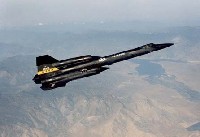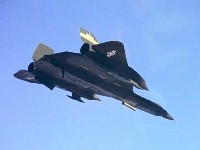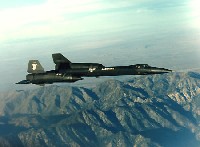|
Global Aircraft -- YF-12 Blackbird
Aviation Center
US Attack
US Bombers
US Cargo
US Fighters
US Helicopters
US Patrol/Pursuit
US Reconnaissance
US Tankers
US Trainers
US UAV's
US X Planes
Orbiter Vehicles
WWI Aircraft
WWII Aircraft
Airbus
Antonov
Boeing
Dassault
Ilyushin
Kamov
MiG
Mil
Saab
Sukhoi
Tupolev
Yakovlev
Joint/Rest of World
Entertainment Center
Members Center
New Technologies
Contact Us
Extra Navigation
GAC Engine
YF-12 Blackbird Specifications
YF-12 Blackbird Achievements
YF-12 Blackbird Features
The YF-12 Blackbird was fabricated of over 93% (structural weight) of titanium alloys to allow it to withstand
skin temperatures of over 500 degrees Fahrenheit. It had the ability to carry three AIM-47A long range AAMs and could fly at mach 3 for substained periods.
YF-12 Blackbird Background
The YF-12 was developed as a high-altitude Mach 3 interceptor for defense against supersonic bombers. It was designed in secrecy by a team headed by Clarence L. "Kelly" Johnson, director of Lockheed's Advanced Development Projects office--better known as the "Skunk Works." The existence of the aircraft was not officially revealed until February 29, 1964. The YF-12A was the forerunner of the highly sophisticated SR-71 high-altitude strategic reconnaissance aircraft. Unlike the SR-71, the YF-12A never became operational, but during the test program, which ended in 1966, it set a speed record of 2,070.101 mph and an alitiude record of 80,257.86 feet. Both records were set on May 1, 1965. To enable the YF-12A to withstand skin temperatures of more than 500 degrees Fahrenheit (generated by air friction), 93 percent of its structural weight is made up of titanium alloys. The aircraft also is coated with a special black paint that helps radiate heat from its skin. All aircraft components were developed especially for the environment of sustained Mach 3+ cruise. Summary Copyright © Charles M (JetWhiz) | ||||||||||||||||||||||||||||||||||||||





